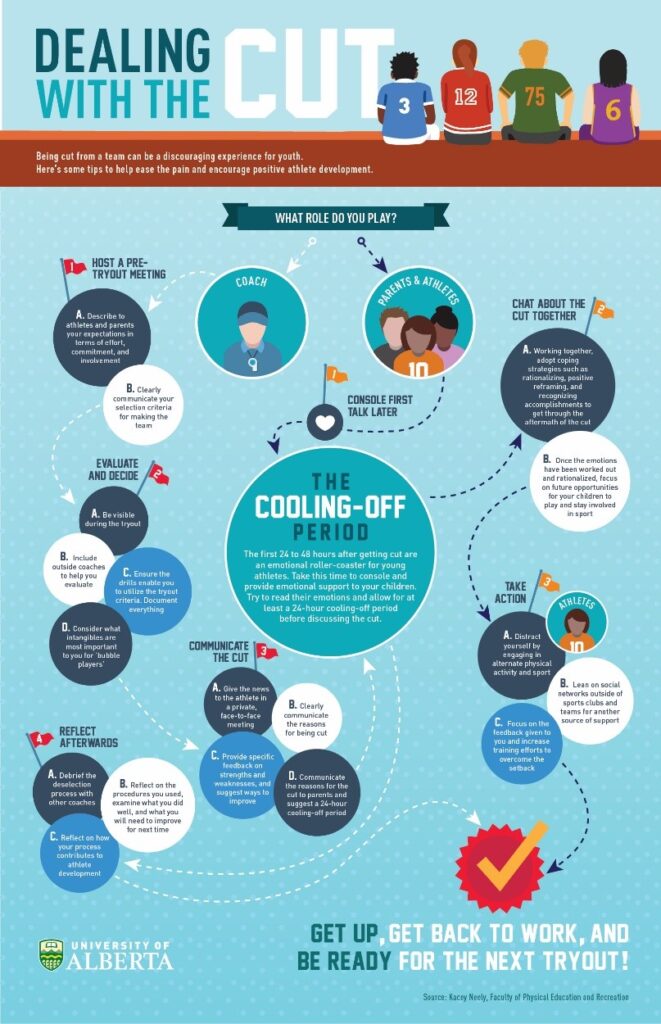This article has been republished with permission from Sport Parent EU
Deselection — or being cut — from a sports team can be a crushing experience for young athletes. After being cut, athletes often experience a range of negative psychosocial and emotional consequences such as a loss of athletic identity, sense of self, friendships, connectedness to school, and decreased academic performance, along with feelings of anxiety, humiliation, and anger. While deselection is a delicate process and coaches should handle making cuts with care (click here for more about coaches & deselection), athletes and parents are required to deal with the consequences of being deselected.
Our recent study examined how adolescent athletes and their parents cope with deselection from provincial sport teams (similar to regional or state teams) using a communal coping perspective which provided a lens for understanding their cooperative coping attempts. Interviews with 14 deselected female adolescent athletes and their parents revealed how the responsibility for coping changed over time. Parents initially took the primary coping responsibility, trying to shield their daughters from negative emotions. As time progressed, athletes and parents cooperated more and shared the responsibility for coping. Finally, athletes took more personal responsibility for coping. Hence, this study showed how family members may work together to deal with negative emotions after a major stressor in sport.
Findings showed that parents can help support their children after being cut through communicating and cooperative coping strategies, which can encourage continued sport participation and positive athlete development.
Parents: Here are some suggestions for you to use to help your child cope after being cut from a team.
Before try-outs begin, talk to your child about their expectations for the try-out, and the coaches’ expectations. Prepare your child for the possibility of not making the team.
‘Console First, Talk Later’ During the first 24 to 48 hours, emotions are high and athletes are not ready to talk about getting cut. Take time to console your child and try to read their emotions before you start asking them about the cut.
Talking about the cut is a very sensitive topic. Gently ask questions about what happened and their thoughts and feelings about being cut to open the conversation.
Rationalise together different reasons why your child may have been cut from the team.
Positively reframe the experience. Try to recognise the accomplishment of making it as far as they did in the try-out, try to view getting cut as a learning experience that could help them grow as an athlete, and chat about future opportunities to tryout again and play their sport at a competitive level.
Encourage your child to focus on their club or school team, or seek other activities to engage in.
Encourage your child to increase their training efforts to improve their skills.
While many would like to see youth sport changed in a way that eliminates the need for deselection to occur, the reality of competitive youth sport is such that deselection is an inevitable aspect year after year. The suggestions listed above provide strategies parents can use to help their child cope with being cut and minimise some of the negative consequences young athletes experience, which may help athletes get back to the field or court, ready to give it another go!

References:
Image Source: Canva







